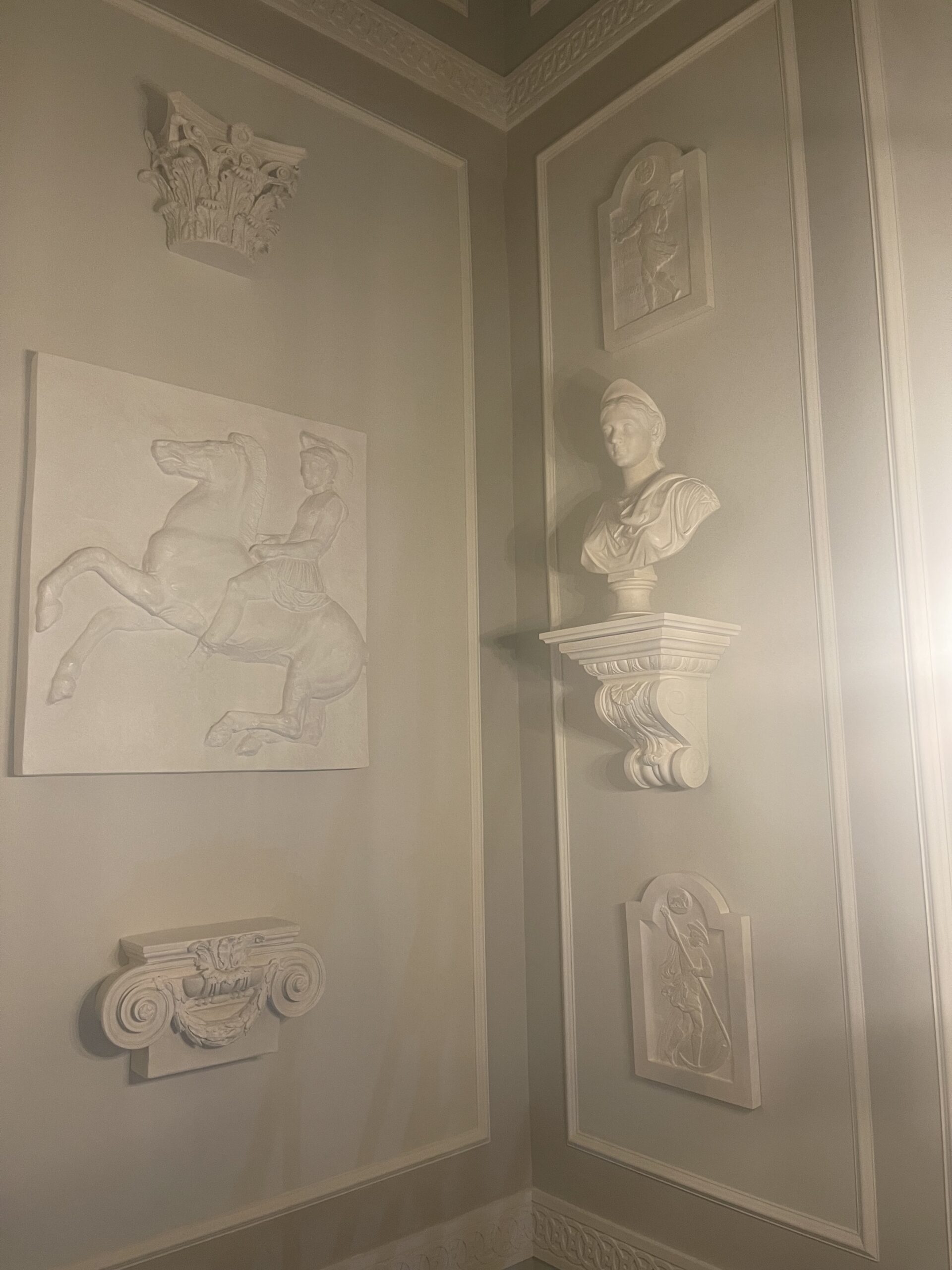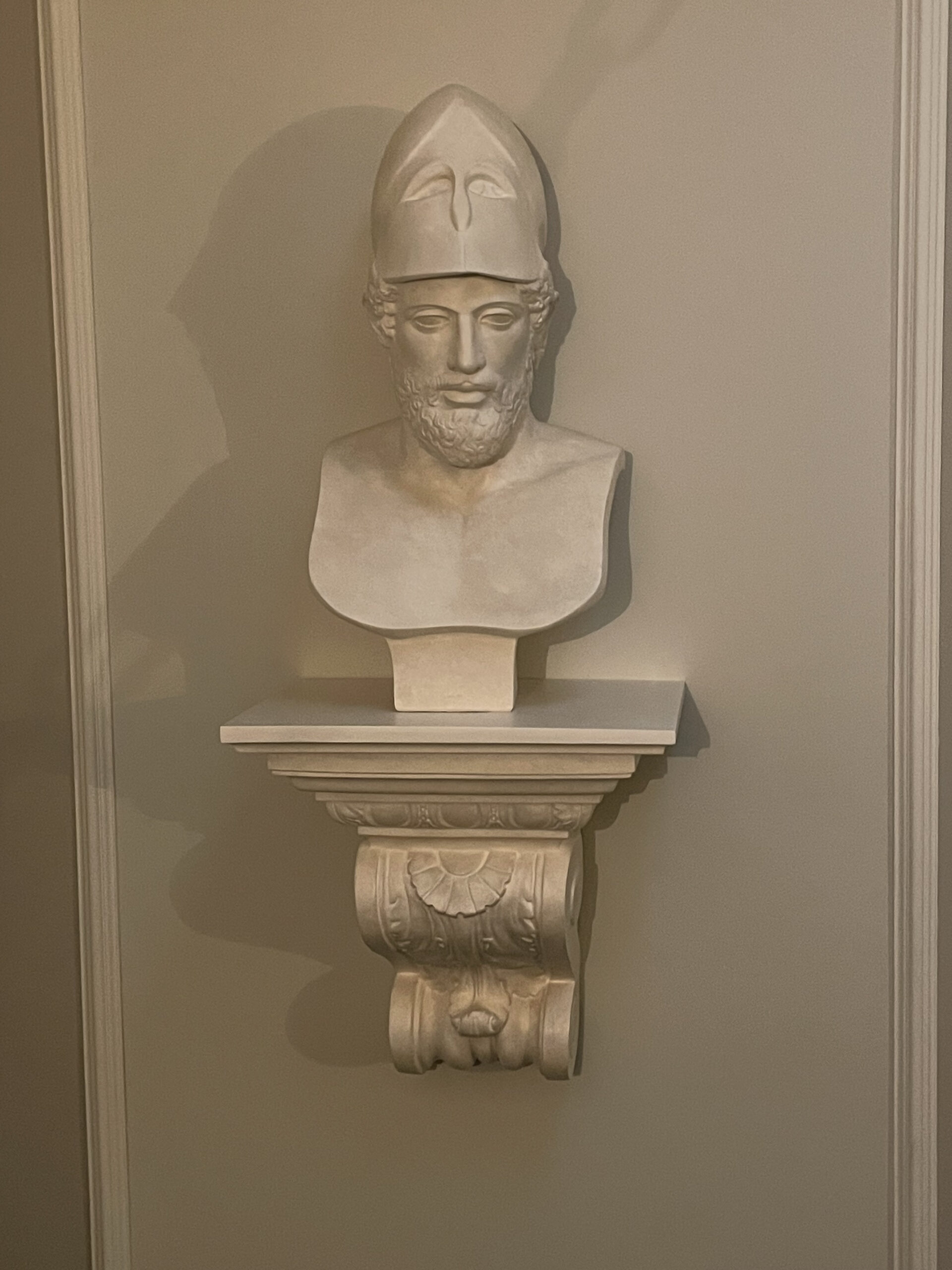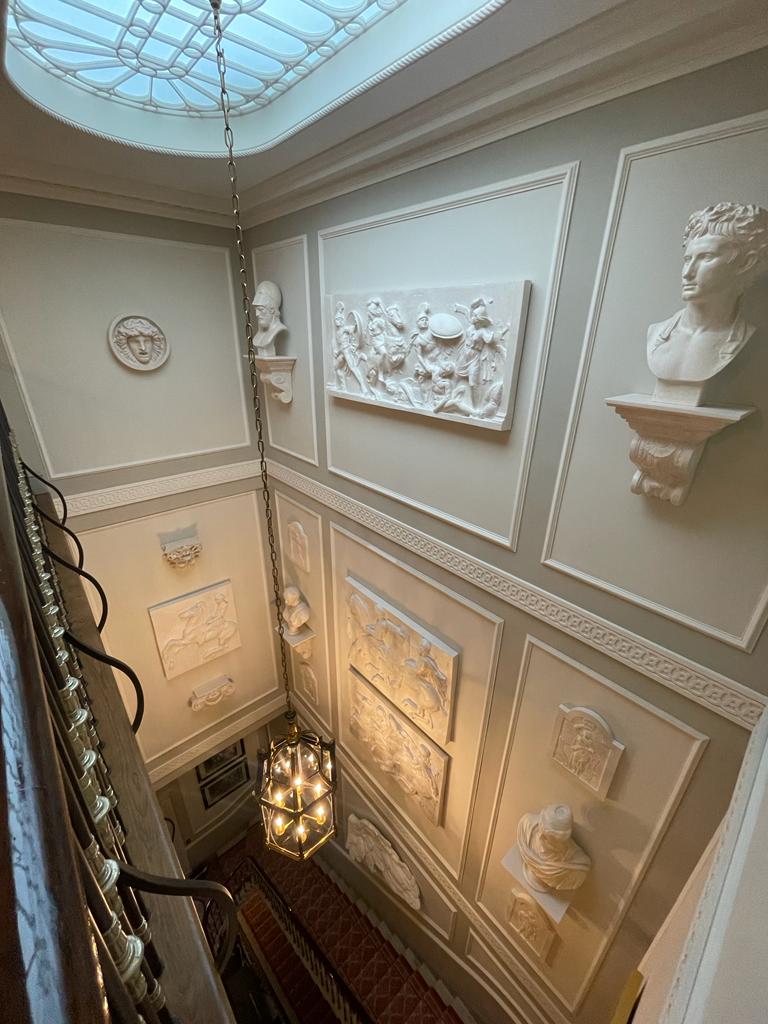Sculpture installation
The main staircase of this Belgravia residence is accompanied by a cascading series of classical, Renaissance and neo-classical plaster cast sculptures. The reliefs, fragments and busts displayed here have been taken from some of the most recognisable sculptures in European history. More »
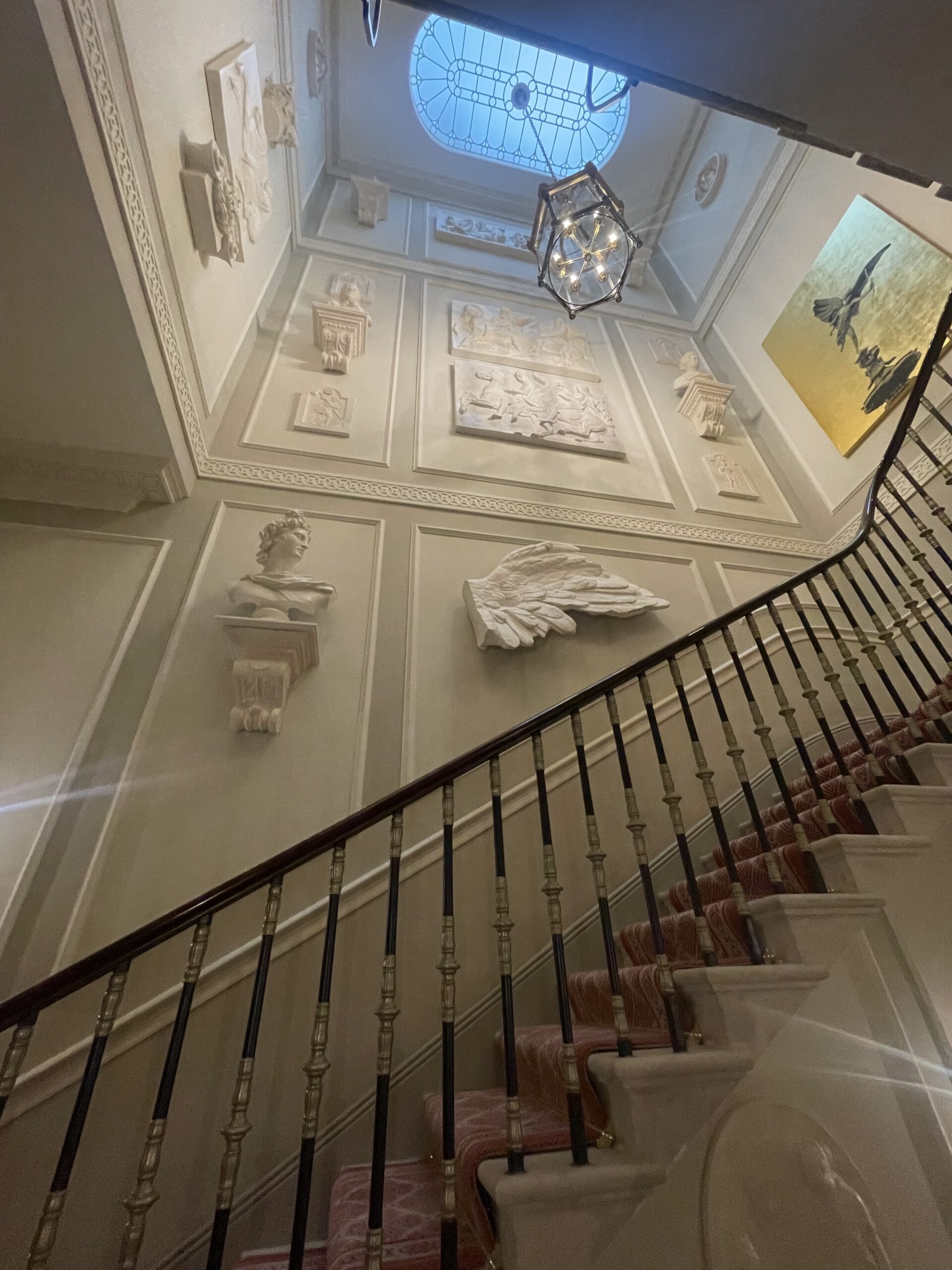
On the ground floor the viewer is greeted by an elaborate Medici vase from a series held in the Villa Medici in Rome during the 16th century. Accompanying this vase are three Medallions by the French Baroque sculptor Jacques Sarazin from his series of Cardinal Virtues. Here, Justice, Prudence and Temperance are personified as goddesses.
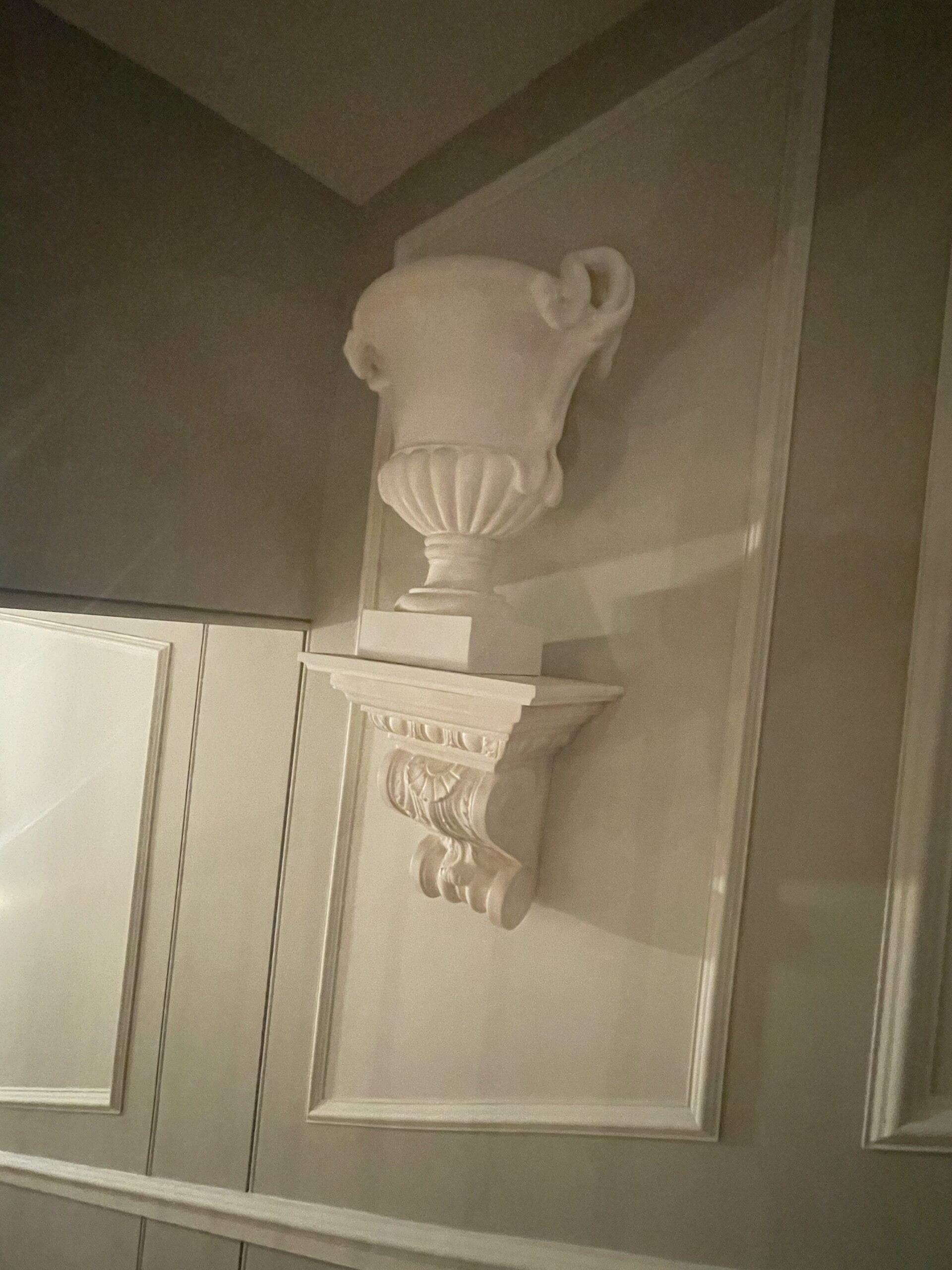
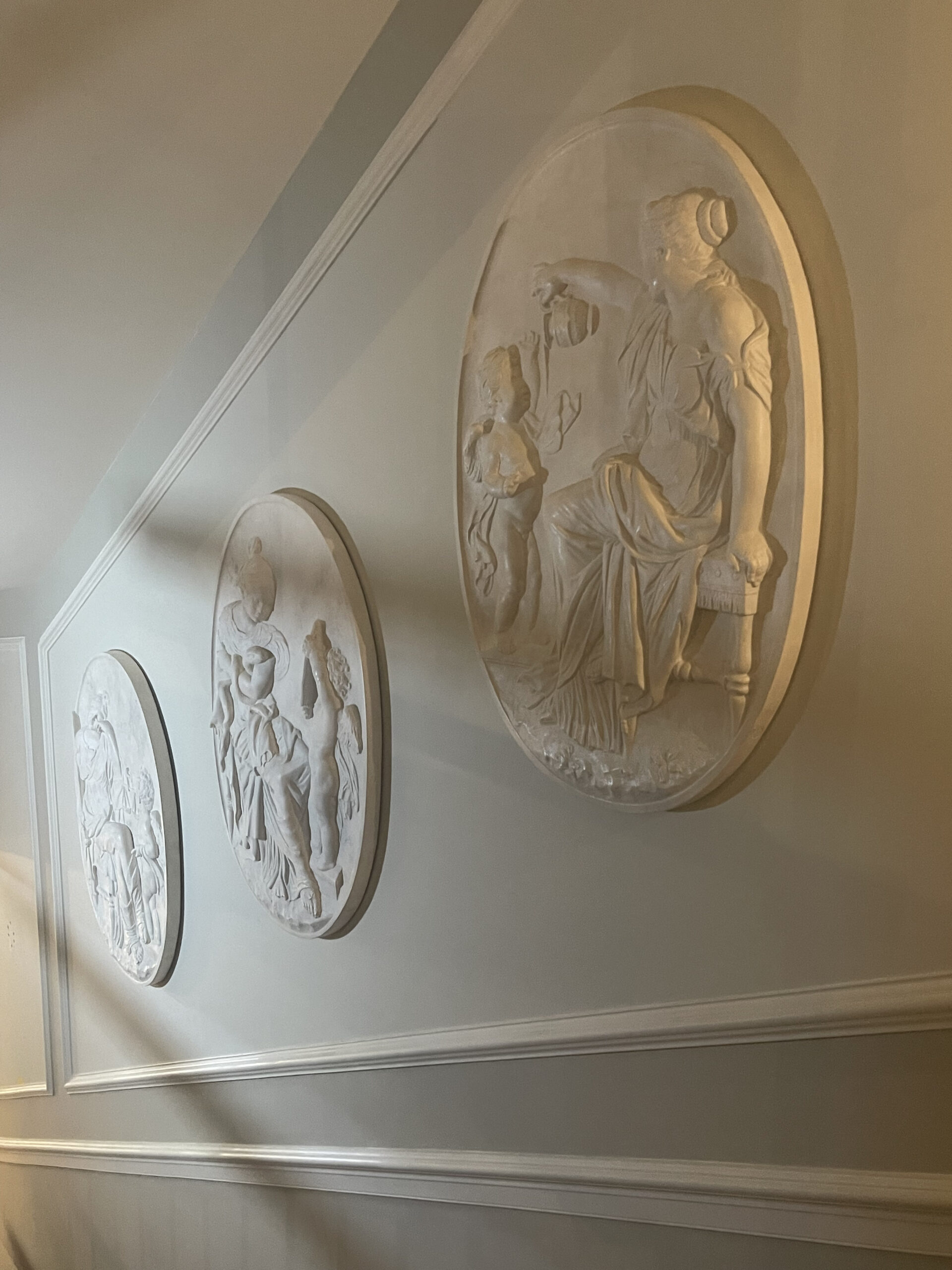
Two monumental fragments govern the wall of the floor above. The first of these is a cast of the bust of the Belvedere Apollo, a Roman sculpture copied from an original Hellenistic work by Leochares. Since 1815, the sculpture has been held in the Vatican collection and is widely considered as one of the greatest examples of Classical craftsmanship. Apollo’s gaze directs the viewer up the staircase to the left wing of the Victory of Samothrace held by the Louvre
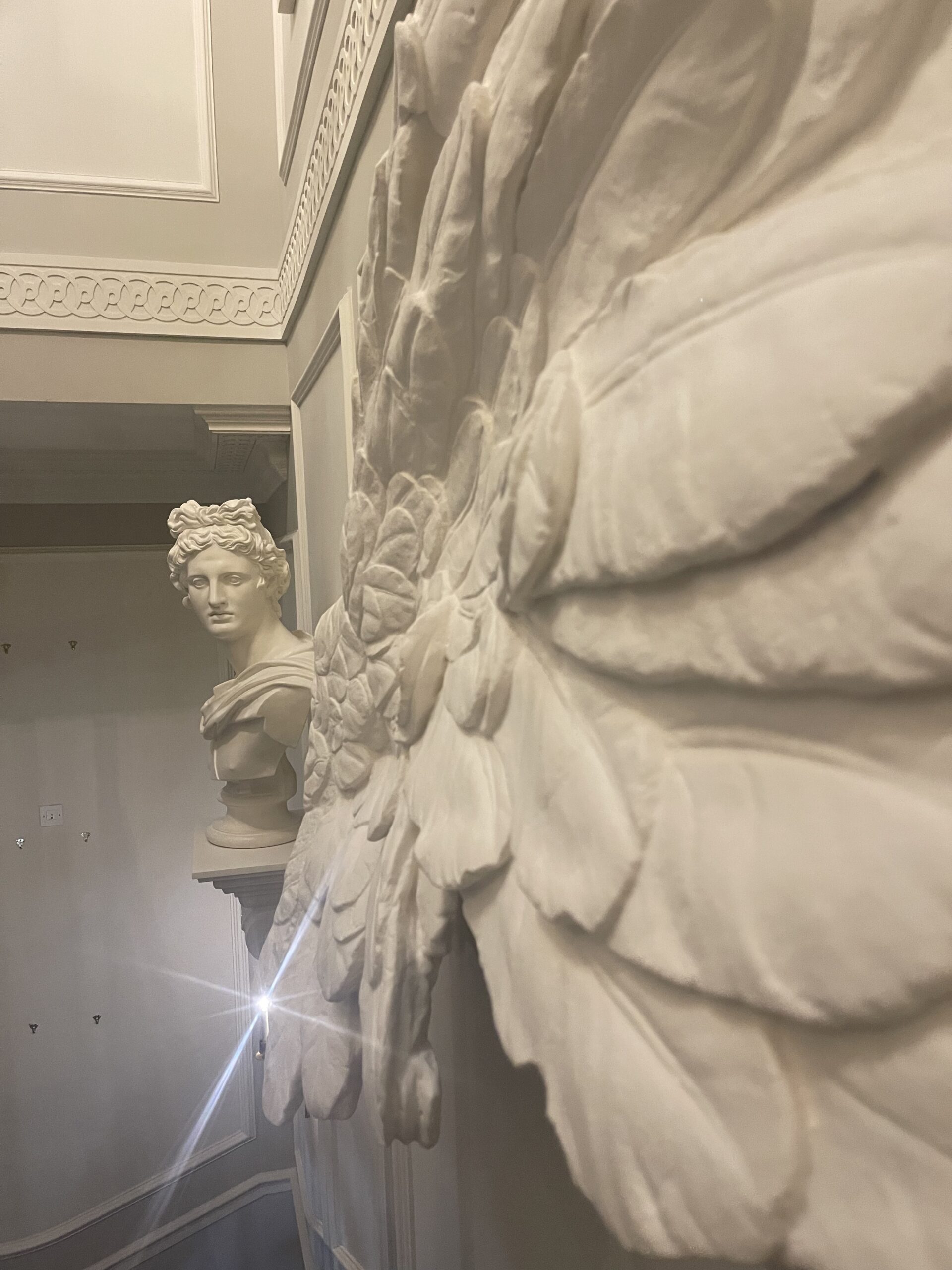
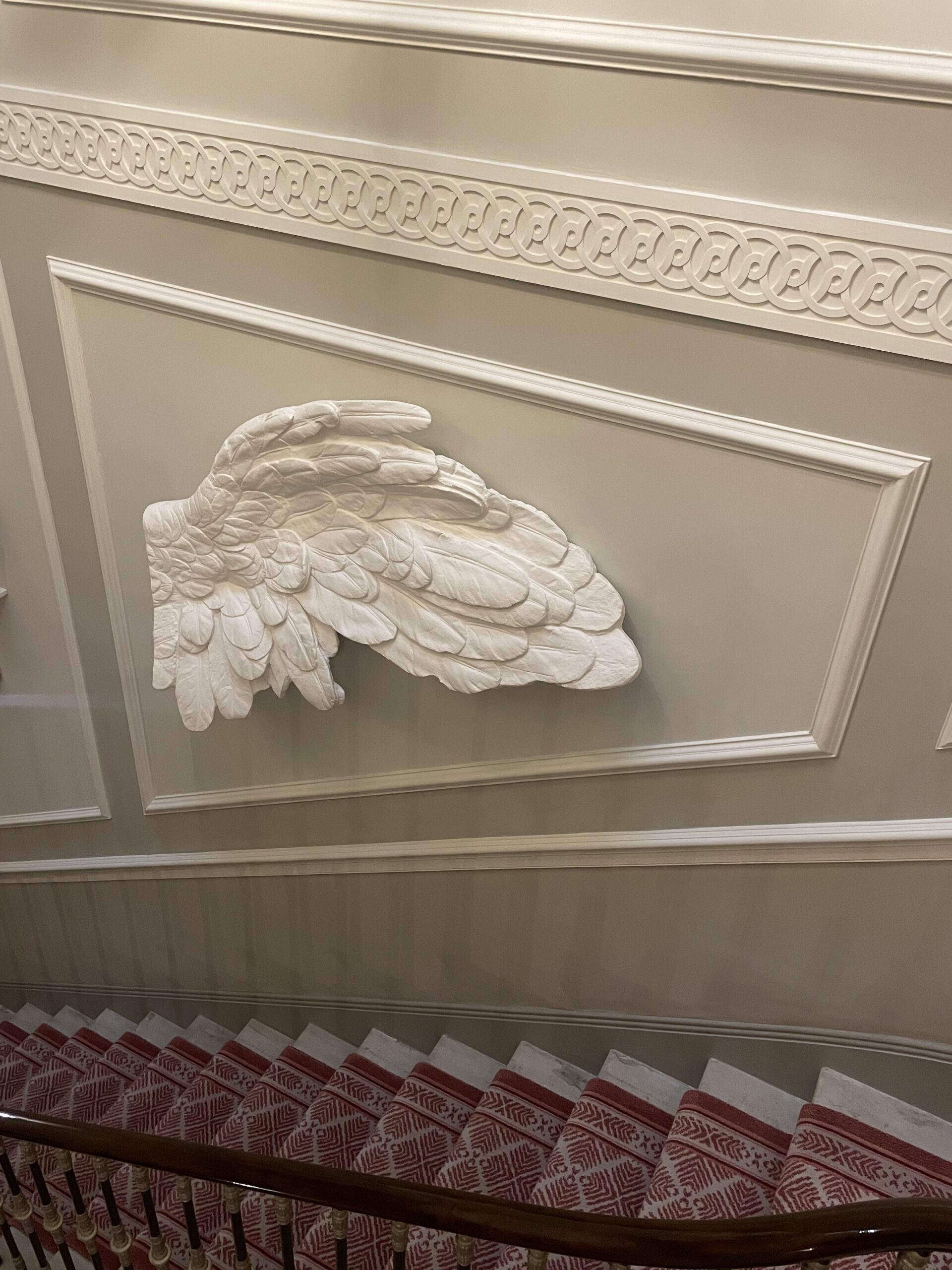
The second floor displays a series of casts from both classical and Renaissance works. Commanding the central and far left panels of this façade are three bass relief metopes of Cavaliers cast from the Parthenon in Athens. Conceived between 447 and 432 BC, these highly dynamic reliefs were a part of the south-facing scheme of the frieze that charts a procession formed during the Panathenaic festival in honour of Athena. More »

